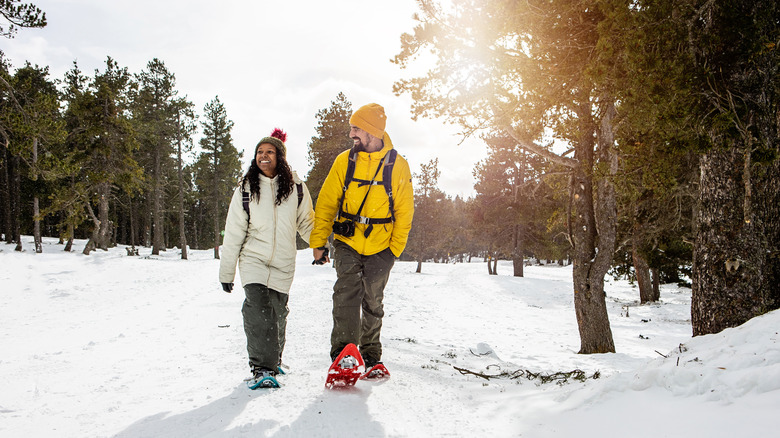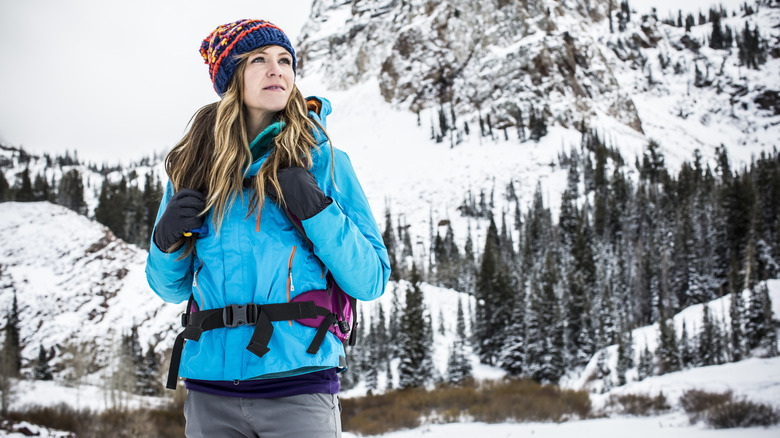What Should You Wear When Going On A Hike In The Winter?
There is a great deal of disagreement over which are the best and worst seasons to hike. A good number of hikers say the milder weather seasons, spring and fall, are the absolute best. But, while many seem to shun the extreme weather seasons of summer and winter, there are others who proclaim them to be the optimal time to hit the trail. In reality, each season has challenges, as well as rewards. The key is to be prepared for the challenges in order to enjoy the rewards.
Believe it or not, there are actually several rewards associated with winter hiking. For one, there are far fewer people on the trails at that time of year. In snow-covered areas, you can have sensational scenery. Even in places without a blanket of snow, the lack of leaves on trees and underbrush that is there during warmer weather allows you to see a greater distance and notice features that may be obscured during other seasons. Another benefit of winter hiking is you will actually burn more calories as your body tries to stay warm.
In the case of winter hiking, the obvious challenge is staying warm. Not being prepared for frigid weather can not only lead to an uncomfortable hike, it can also be a safety concern. This is definitely a hiking mistake to avoid. Not only does the cold winter weather present risks like hypothermia and frostbitten fingers and toes, it also makes dangerous hiking spots infinitely more perilous. So, just as you should pack the 10 hiking essentials for emergencies, you should also make sure you are wearing the proper clothing for a hike in the winter.
How to keep warm on a winter hike
While it may be tempting to just bundle up with the warmest clothes you can find before heading out on a winter hike, there is a more sensible approach. Experts agree that layering clothing is the most efficient way to both stay warm and adjust to changing temperatures throughout the day. R.E.I. suggests a three layer system of synthetic and/or wool clothing, not cotton, which tends to absorb moisture and is slow to dry.
The three-layer system is made up of a base layer, mid-layer, and outer layer. The base layer should be a thin, synthetic, moisture-wicking material. The mid-layer is meant to provide insulation and may actually be more than one piece. The idea here is you can add or remove layers to adjust to temperature changes. The purpose of the outer layer is to protect against wind and moisture. These two elements can make any temperature feel much colder.
Additionally, you should take steps to protect your extremities. Comfortable, insulating socks made from synthetic materials or wool, along with gloves will keep your hands and feet warm. A neck or face gaiter can protect your nose, cheeks, and ears, while a hat will help keep heat from escaping from your head. It is also advisable to wear goggles or sunglasses to protect your eyes not only from the sun, but from cold wind as well.

